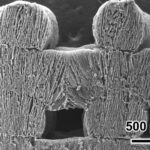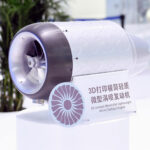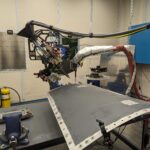A team of physicists from the University of Amsterdam has developed 3D-printed particles capable of propelling themselves across the surface of a fluid using the Marangoni effect.

The Marangoni Effect in Action
The Marangoni effect occurs when a droplet with lower surface tension than the surrounding fluid spreads across the fluid’s surface rather than mixing. A familiar example is alcohol spreading on water until it evaporates. Leveraging this phenomenon, the researchers designed particles capable of self-propulsion by releasing alcohol as a fuel.
The particles were 3D-printed into hollow hockey puck-like shapes, approximately 1 centimeter in diameter. Their hollow design made them buoyant, and each particle included an internal “fuel tank” filled with alcohol. A small pinhole allowed the alcohol to escape gradually when the particle was placed on water, creating a continuous spreading motion that propelled the particle forward.
Performance and Observations
The experiments demonstrated that stronger alcohol concentrations resulted in faster movement, with particles reaching speeds of 6 centimeters per second. The researchers also found that the particles could move for up to 500 seconds before running out of fuel. Larger particles were also tested, and interactions between multiple particles led to the Cheerio effect, where individual particles attract and move in tandem—much like how cereal clusters in milk.
Potential Applications
The researchers suggest that their 3D-printed, self-propelling particles could inspire new solutions in environmental and industrial applications. For instance:
- • Environmental Cleanup: These particles could potentially aid in collecting or removing contaminants from the surface of a liquid.
- • Chemical Distribution: The particles could evenly disperse chemicals across a fluid surface, offering an alternative to traditional mixing methods.
Innovation through Additive Manufacturing
The work highlights the versatility of 3D printing in creating complex, functional designs that interact dynamically with their environments. By combining additive manufacturing with fundamental physical principles, the research team has opened the door to novel applications in areas ranging from environmental science to industrial processing.
For more details, the full preprint paper is available on arXiv.
Source: phys.org










